Snapdragon 800 (MSM8974) Performance Preview: Qualcomm Mobile Development Tablet Tested
by Brian Klug on June 18, 2013 8:00 PM ESTCPU Performance
The state of CPU performance testing under Android is unfortunately still quite broken. We're using a mix of browser based tests with Java & Native apps (AndEBench).
The key comparisons to look for are the Snapdragon 800 MDP/T vs. the Exynos 5 Octa (4 x ARM Cortex A15s) based Galaxy S 4 (SHVE300S), the Exynos 5 Dual (2 x ARM Cortex A15s) based Nexus 10 tablet and any of the Snapdragon 600 based smartphones (HTC One/T-Mobile Galaxy S 4) running two Krait 300s at 1.7/1.9GHz.
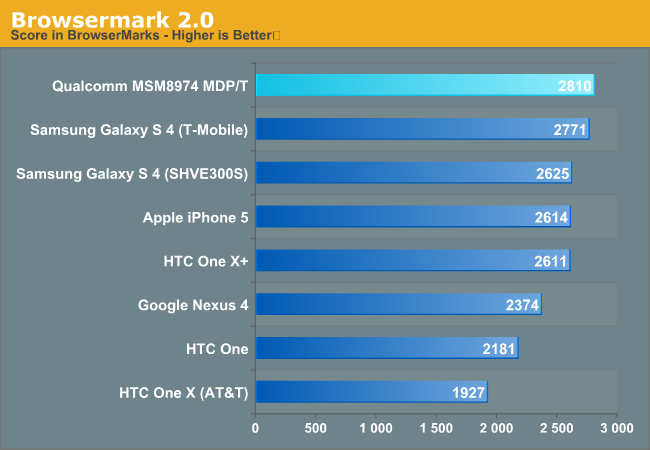
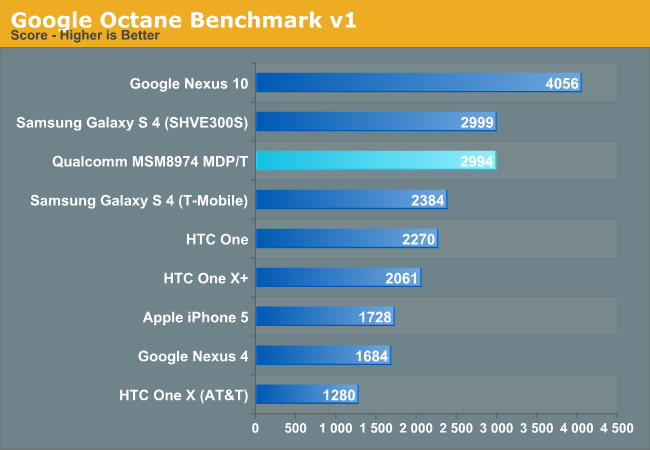
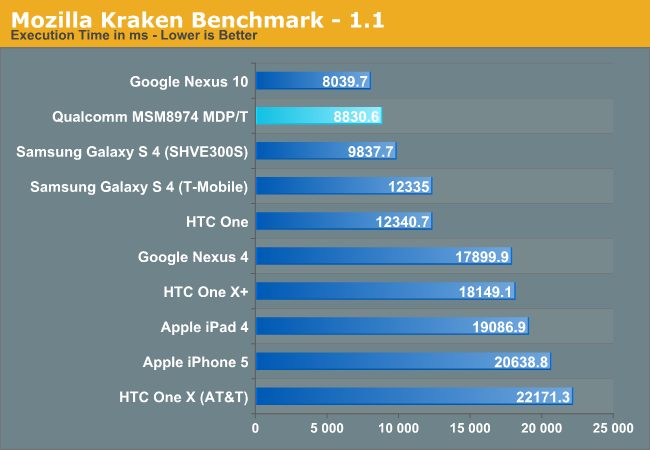

Krait 400 seems to do very well against ARM's Cortex A15, trading positions in terms of performance depending on the test. As these are browser based benchmarks there's a big software component to variability that prevents big conclusions from being made here, but it's clear that Snapdragon 800 is in a similar performance class to current Cortex A15 based designs.
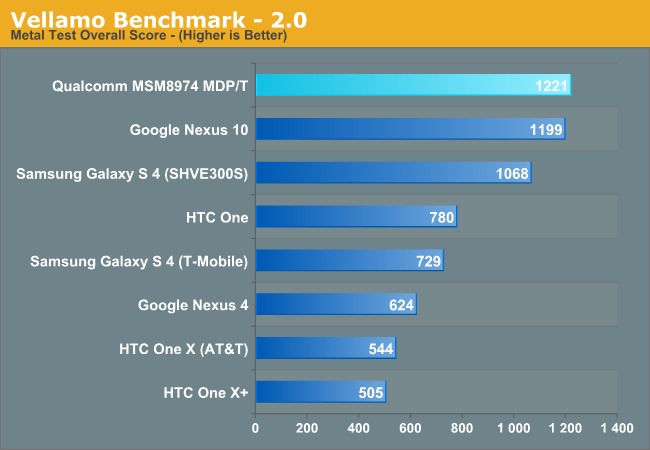
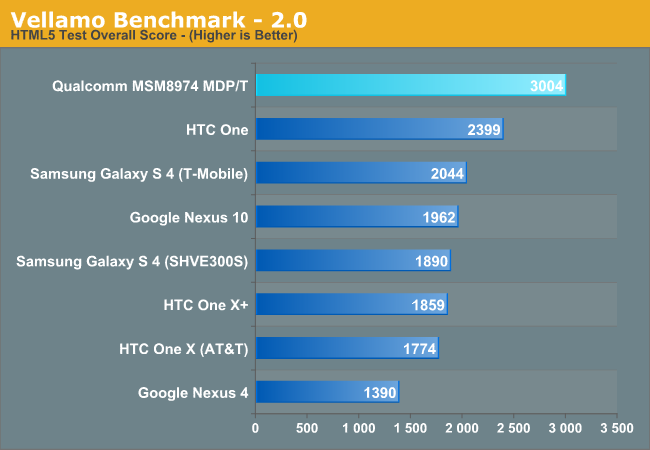
AndEBench
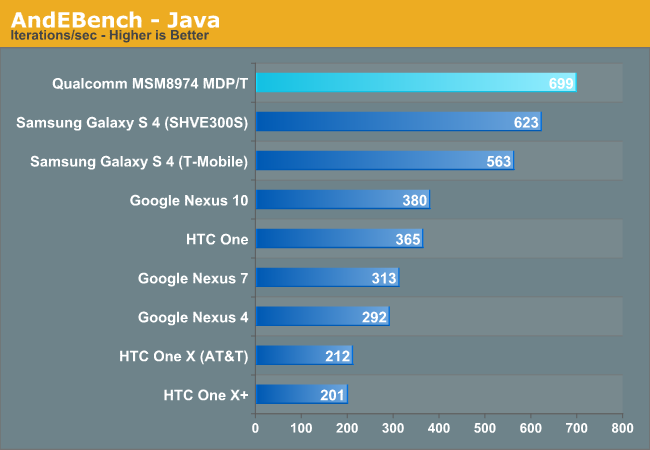
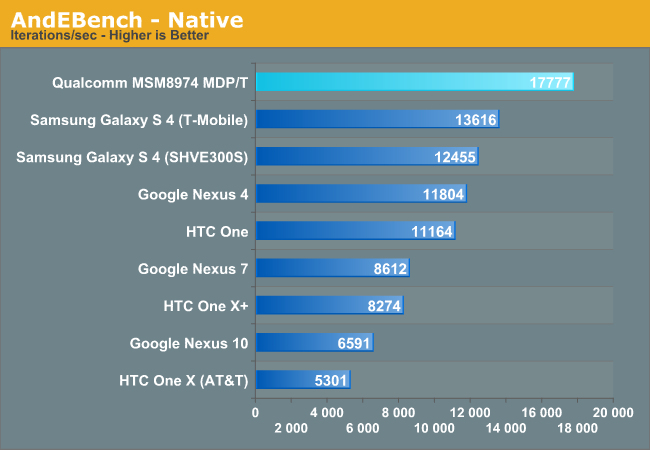
The Java and Native client AndEBench tests echo what we've seen elsewhere: Snapdragon 800 can definitely be quicker than ARM's Cortex A15, and at least is in a similar class.










115 Comments
View All Comments
Krysto - Wednesday, June 19, 2013 - link
"The overall graphics score from Adreno is amazing. We're looking at almost 2x the next fastest contender here, the Adreno 320 based Snapdragon 600."Why is that so amazing? Adreno 320 came out first last fall, which is about a year before S800 with Adreno 330 comes out. Are you saying you're surprised mobile GPU's can double in performance every 12 months?
nunomoreira10 - Wednesday, June 19, 2013 - link
On the same process nod, hell yeahAenean144 - Wednesday, June 19, 2013 - link
Not exactly the same process node, and we don't know TDP yet.richworks - Tuesday, June 25, 2013 - link
please excuse my ignorance but how is TDP related to the process node?dishayu - Wednesday, June 19, 2013 - link
In the great equalizer charts, can someone please explain how GeForce 8500 manages to outperform the 7900 GTX in DXBenchmark 2.7? The 8500 had similar performance to a 7600GS from what i remember.nunomoreira10 - Wednesday, June 19, 2013 - link
Uniform shaders i believeRyan Smith - Wednesday, June 19, 2013 - link
Unified rather than uniform, but yes. We did an article in April looking at the issue in greater depth: http://www.anandtech.com/show/6877/the-great-equal...Speedfriend - Wednesday, June 19, 2013 - link
Where will the new generation Atom show up in the list? As I understand it, it will have graphics comparable to the HD4000 in the Ivy Bridge, so in theory it should outperform this Qualcomm chip?psychobriggsy - Wednesday, June 19, 2013 - link
No, it will have graphics based upon the HD4000 architecture - but it will have fewer units and run at a lower speed, in order to attain TDP requirements.FwFred - Wednesday, June 19, 2013 - link
The number of EUs does not directly tie to TDP. See HD5000 vs HD5100. The clock speed is important, and wider but slower is more efficient.